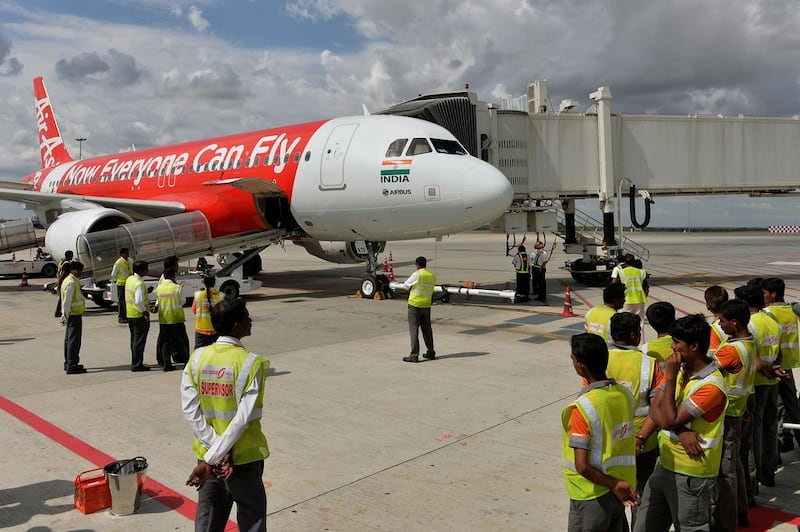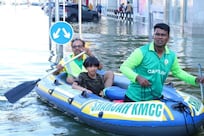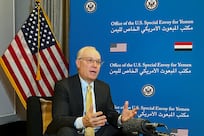Enforcement of safety standards in India’s aviation industry is not keeping pace with the rapid growth of the sector, experts warn.
A number of pilots in India have been securing licences after barely flying because of fudged documents, while the regulator is ill-equipped to monitor safety of aircraft and personnel as airlines continue to expand and more carriers take to the skies in the country.
With the International Civil Aviation Organization expected to conduct an audit towards the end of this year, aviation safety in India is coming into sharp focus.
“In my nearly 30 years of experience in aviation in India, I always found a great emphasis on very high safety standards in the initial years,” says Satish Modh, who was in aviation for most of his career before becoming the director of the Vivekanand Education Society Institute of Management Studies and Research in Mumbai.
“But as the aviation sector expanded greatly, the system was not geared enough to handle such high growth. Nearly the same number of people were dealing with a three to fourfold increase in the number of aircraft and licensed personnel. Even if the measures were stringent there was the possibility of making mistakes and ignoring some incidents due to shortage of flight inspectors.”
There has been a surge in the growth of India’s aviation sector over the past decade, particularly with the rise of low-cost carriers. Last year, a new full-service airline, Vistara, a joint venture between Singapore Airlines and Tata Group, took to the skies. The previous year, the budget airline AirAsia India launched in the market.
“With the growth in aviation sector there was huge demand for pilots by private airlines,” says Mr Modh. “There was a rush to obtain pilot licences and aspirants went all over the globe including some dubious flight schools in India, US, Europe and south Asia. The Directorate General of Civil Aviation (DGCA) conducted raids on many flight schools and cancelled their flight training licences,” he explains.
“The problem arose because of fudging of the record books which were filled manually. Certainly after the new incidents of fudging brought to light, there is a need for recertification of flying clubs and pilot training schools.”
Anupam Verma, 25, told Bloomberg News recently that he was given a certificate showing he had flown an airplane for 360 hours by a flying school in Indore after spending just over half-an-hour in the air in the co-pilot’s seat. In India, 200 hours of flying are required to obtain a pilot’s licence.
“What if I was flying and had an emergency?” he said. “I wouldn’t even know how or where to land.”
For its part, the DGCA has indicated that it plans to conduct a review of all flying schools in India that would require their recertification.
Airlines in India are struggling with profitability amid price wars and high operating costs, including taxes. Indian airlines’ losses are expected to total US$1 billion this year, according to the International Air Transport Association. It expects India to become the world’s third largest aviation market by 2029.
“We do believe that there needs to be a focus on strengthening the resources and expertise within the DGCA to ensure that Indian aviation is able to grow safely,” says Binit Somaia, the director for South Asia at Capa Centre for Aviation. “With traffic having the potential to triple over the next decade this will place a significant additional burden on the regulator for which it needs to be equipped and prepared.”
Capa’s figures show that India’s domestic airline passenger numbers have reached about 60 million passengers a year.
“In the 50 years from 1953 to 2003, the largest number of annual passengers that India’s domestic market added in a five-year period was 3.6 million,” according to a report by Capa. “However, 2004 marked a turning point in Indian aviation as liberalisation of the market and the entry of low-cost airlines resulted in unprecedented expansion. In the five years to 2008 annual traffic had tripled, surging by an incremental 29.1 million, eight times greater than in any equivalent period before.”
Despite concerns over the implementation of safety standards, the rate of fatalities in the aviation sector has actually decreased substantially over the past decade compared to previous decades between the 1940s to the 1990s in India.
India’s last major accident was the crash of an Air India Express flight from Dubai to Mangalore, which overshot the runway in Mangalore, killing 158 people in 2010.
“The concern is that there is a lack of commitment to safety with an approach that involves reacting to threats in order to scrape through and meet minimum requirements rather than pro-actively seeking to achieve a best practice safety culture which requires leadership, talent, investment and execution,” according to Capa.
The US Federal Aviation Administration (FAA) in January last year downgraded India in its international aviation safety assessment to category two, meaning that it did not meet international standards in its oversight of safety. This downgrade prevented Indian airlines from launching new services to the US. India managed to regain its category one status in April after improving its safety oversight processes over the course of more than a year.
The FAA had flagged issues including "India's flight safety inspectors, flying schools, certification process of airlines and maintenance, repair and overhaul inspection procedures", the director general of civil aviation, M Sathiyavathy, told the Indian business newspaper Mint two weeks ago.
“We have also started recertifying airlines and have completed six airlines,” Ms Sathiyavathy said. “We will complete recertifying all airlines by March based on new procedures.”
Safety issues are only set to become more pressing.
The Asia-Pacific region is at the forefront of an "unprecedented" demand for pilots and technicians, according to Boeing. As commercial airlines globally take delivery of tens of thousands of planes over the next two decades, it forecasts that the industry will require more than 1 million new aviation personnel, made up of 558,000 commercial airline pilots and 609,000 maintenance technicians. Boeing estimates that 40 per cent of this demand for pilots will be in the Asia-Pacific region, with a predicted 226,000 new pilots required over the next 20 years.
“Safety needs continuous monitoring and compliance of standards,” says Mr Modh. “The government has to crack down on fake flying schools with a heavy hand to restore faith in the system.”
business@thenational.ae
Follow The National's Business section on Twitter





